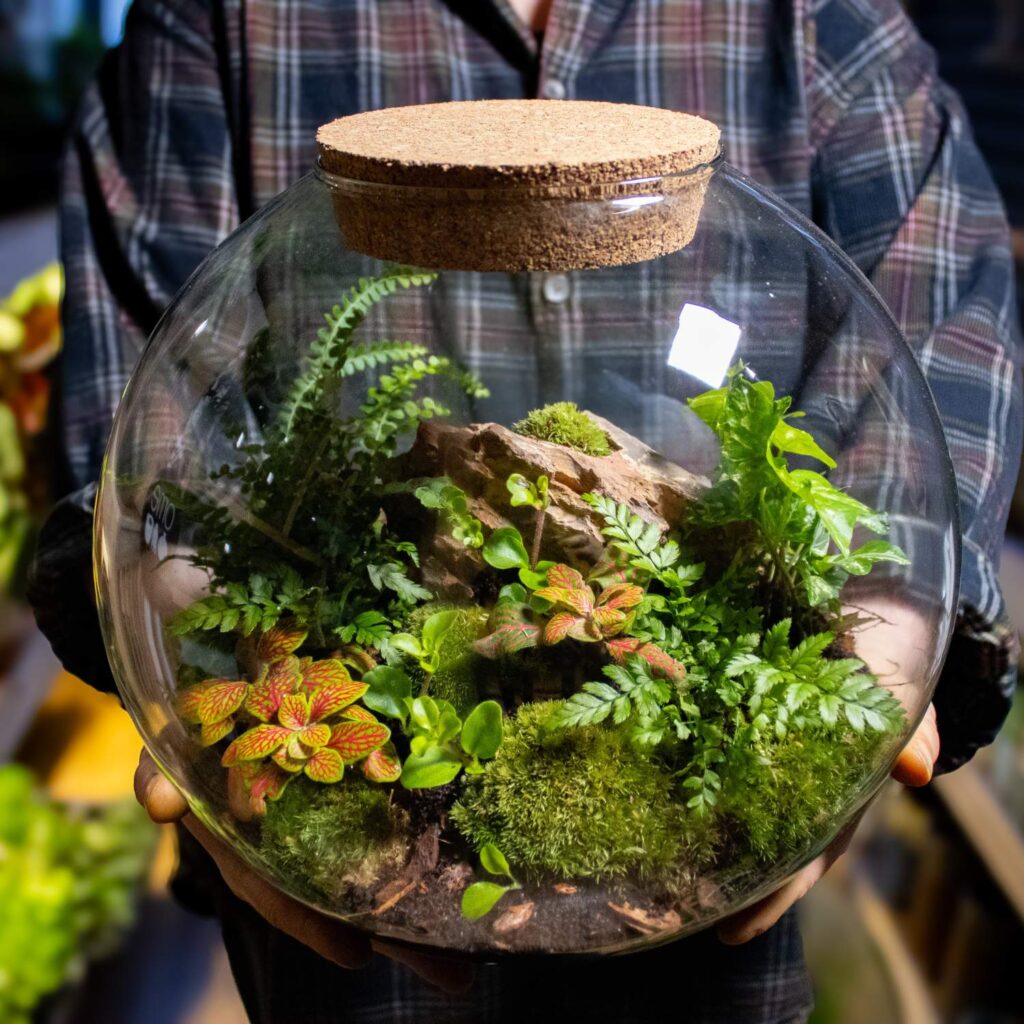



Published in the News-Review November 8, 2024
By: Chris Rusch
“Constructing and caring for a terrarium”
Question: Can you give me some tips for constructing a DIY terrarium? I would like to make one as a gift.
Answer: Terrariums make wonderful and impressive gifts for home gardeners of any level, including beginners. Terrariums, glass cases that hold small plants, give a room a touch of the Victorian Age. In fact, the history of terrariums is rooted in the Victorian age. As Europeans traveled the globe in the 1800‘s, they used Wardian cases (which are early types of terrariums) to protect specimen plants during their journey by sea from faraway places back to Europe. They were used in parlors to house many of the delicate and exotic plants brought to Europe and North America from tropical areas around the world.
Nowadays, a terrarium is used for decoration. It is a blend of science and art, where tiny plants and moss create a self-sustaining ecosystem, thriving under the watchful eye of its creator. Through the process of transpiration, evaporation, and condensation, the water is returned to the soil in a perpetual self-sustaining cycle. The ideal terrarium balances water needs, requires no fertilizer, and thrives in warm spaces with moderate light.
A terrarium consists of four levels: gravel, moss, soil, and plants. Your terrarium container can be anything from low-cost and functional to expensive and sophisticated. Suitable containers include aquariums, goldfish bowls, Wardian cases, tureens, glass cookie jars, and even large brandy snifters. Open terrariums are less likely to experience problems with condensation and fungal plant diseases than closed terrariums.
A terrarium container does not have drainage holes, so you will need to create a drainage layer to keep water away from plant roots. Start with a 2-inch layer of gravel or crushed stone at the bottom of the terrarium. Next, add a 1/4-inch to a 1/2-inch layer of activated charcoal on top of the stones to help with drainage and control any odors. You can substitute lush, green live moss for charcoal. Next, add several inches of slightly damp, sterile potting soil on top of the moss or charcoal. Do not use a potting soil mix with fertilizer already incorporated; terrarium plants don’t need the extra fertilizer. Keep the soil level low enough so that the plants will fit inside the container with room to grow.
The next step is selecting your plants. Plants with slow growth rates, tolerance to high humidity, and small leaves make good candidates for terrariums. Because the plants will be planted in the same space, the most important consideration is that all the plants tolerate the same soil moisture, light levels, and other growing conditions. The best plants for terrariums include anything that’s miniature and doesn’t require a lot of pruning to keep it in check. For visual appeal, choose a mix of leaf sizes, textures, and colors. Always keep in mind that they need to be small enough to fit in your container, preferably without touching the sides of the terrarium. Some recommendations include:
- Miniature African violets thrive in humid and low light conditions. Plant them in the middle of the display for the best results.
- Creeping fig, sometimes called string of frogs, is a charming plant that will creep and climb in your terrarium.
- Jewel orchids, which are terrestrial orchids that grow in soil, have beautiful striped foliage, and diminutive flowers.
- Spike moss has teeny-tiny, rounded leaves on a compact plant making it a fun addition to terrariums.
- The colorful foliage of fittonia is slow-growing and stays compact, making it a perfect terrarium plant. It has interesting, patterned foliage in shades of white, red, and pink.
- The polka dot plant has pink, red or white spotted foliage.
- Miniature begonias are magical in a terrarium, with their beautifully patterned leaves and various forms.
- Two unique ferns to consider are: maidenhair fern featuring delicate, lacy foliage and bird’s nest fern having a unique nest shape.
Place your terrarium in filtered light. Avoid locations that get direct sunlight. Watering frequency for your terrarium can vary based on the type of soil, plant species, light levels, and other factors. Check on your terrarium every few weeks and add water when the soil becomes dry. If excessive condensation builds up on the glass, uncover the terrarium until the condensation evaporates; then replace the cover. Remember, plants need to breathe. That’s why a terrarium cover should fit loosely.
Over time, your plants will begin to outgrow their space. Prune back your plants as needed to keep them looking good. When plants become too unruly or large, pull them out and replace them with something else. Have fun and use it as an opportunity to change things up and try new plants.
Do you have a gardening question? Please email, call, or visit the Douglas County Master Gardener Plant Clinic at douglasmg@oregonstate.edu, 541-672-4461, or 1134 S.E. Douglas Ave., Roseburg.

